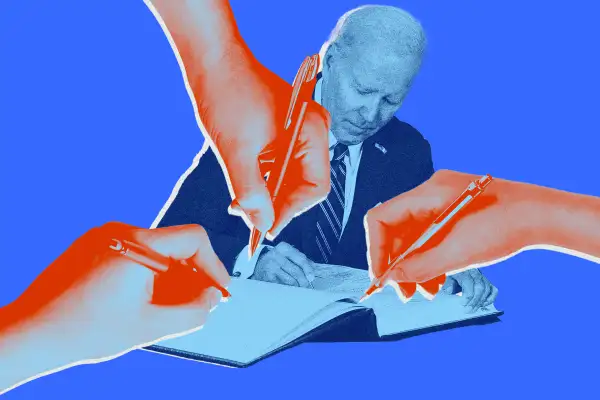You Can Sign up Now for Biden's New Student Loan Repayment Plan

The Biden administration has formally launched a new student loan repayment plan for federal borrowers — and officials are urging borrowers to sign up before payments resume in a few weeks.
The initiative, called Saving on a Valuable Education (SAVE), is an income-driven repayment plan, meaning bills are tied to a person's income rather than the amount owed. The timing is purposeful: The rollout comes as federal student loan payments are set to resume this fall after a more than three-year pandemic pause.
The SAVE plan is one of a handful of ways that the administration is working to overhaul the student loan system after President Joe Biden’s flagship debt cancellation initiative was struck down by the Supreme Court earlier this summer.
Designed to replace the existing Revised Pay as You Earn (REPAYE) plan, SAVE is intended to protect more of a borrower’s income from getting eaten up by required monthly loan payments. It will also cover unpaid interest on a borrower’s account so that loan balances don’t grow as long as monthly payments are made on time. In a news release, U.S. Secretary of Education Miguel Cardona called the plan "the most affordable repayment plan ever created."
After releasing a beta version last month, the department said Tuesday it has fully launched the updated income-driven application tool where borrowers can submit applications for the new plan.
Changes to income-driven repayment plans under SAVE
Only some aspects of the new SAVE program will be implemented when borrowers resume payments in October, according to the Education Department. One of the biggest changes has to do with the amount of a borrower’s income that is protected from payments.
Under the old REPAYE plan, borrowers had to make monthly payments equal to 10% of their discretionary income, which is defined as any income in excess of 150% of the federal poverty guideline.
Under SAVE, that threshold will increase to 225%. Borrowers who make roughly $15 per hour or less will qualify for $0 payments, and those who earn more could see their payments reduced by at least $1,000 per year compared to other IDR plans, according to the Education Department.
The government will also begin writing off any unpaid interest on SAVE borrowers' accounts, so long as they are making regular payments. That change is designed to prevent loan balances from ballooning if a borrower's payments aren't enough to cover monthly interest charges. Seventy percent of borrowers who were enrolled in these plans before the payment pause would benefit from this provision, according to department estimates.
What's more, some borrowers could see their payments reduced even further when more changes go into effect in July 2024. For one, payment requirements for undergraduate loans will be reduced from 10% of a borrower's discretionary income to 5%. Required payments for borrowers with both undergraduate and graduate loans will be calculated by a weighted average of between 5% and 10%.
How to sign up for Biden's new student debt repayment plan
Borrowers who are already enrolled in REPAYE will be automatically enrolled in the SAVE plan in the coming months.
If you aren't enrolled in the REPAYE plan, you can visit the Education Department's website here to apply for the SAVE plan using your StudentAid.gov account. You'll need your federal student aid information and financial details.
The Education Department says borrowers should expect to be able to complete the application in 10 minutes or less, adding that borrowers who apply this summer will have their applications processed in time for the first student loan payment due date in October.
Keep in mind it may take a few weeks of processing for your account records to update with details of the new plan. In the meantime, check out the Education Department's announcement here.
More from Money:
Many Student Loan Payments Could Be Cut in Half Under Latest Biden Plan
How Student Loan Borrowers Can Prepare for Big Changes Coming in 2023



